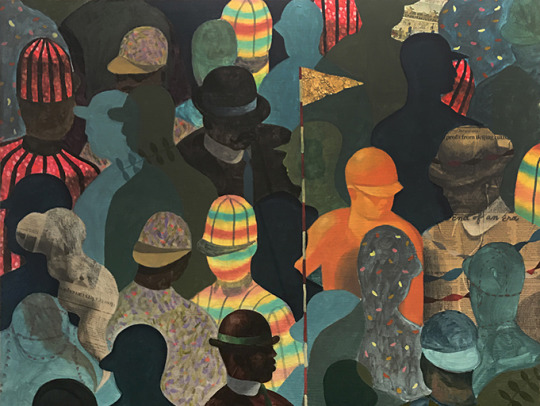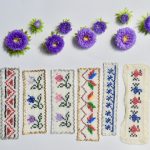The Art of the Application | NYSCA/NYFA Artist Fellowship Application Feedback
Here are tips for making your next grant application stand out from the crowd, courtesy of the NYFA Grants team.
For the 2017/2018 application cycle alone, The New York Foundation for the Arts (NYFA) received a total of 3,071 applications for the NYSCA/NYFA Artist Fellowship. In total, we reviewed 12,100 pages of manuscript, nearly 19,710 images, and more than 1,980 minutes of video excerpts! Due to the high volume of applications we received, in this cycle and in others, we are unable to give applicants individual feedback. However, we wanted to provide some general insights gained from our panel review process to help you with future grant opportunities.
Start your work samples off strong!
If you’re submitting images, choose one of your strongest works as your first image. During the NYSCA/NYFA Artist Fellowship panel, the moderator reads aloud the title, date, and dimensions of your 1st and 6th images. If you decide to present two bodies of work, the 6th image is a good place to introduce the second series. For literary artists, manuscripts should begin with a paragraph that creates a strong sense of place or character, and does not necessarily have to be from the first page of your writing. If you are working in video/film or audio, your excerpts will be reviewed first, so make sure they start exactly where you want panelists to begin watching or listening.
Take time to document your work.
Your work sample is only as strong as your documentation. Make sure your work samples properly and professionally portray your work. Images that include unnecessary background clutter are distracting. Hang a painting on the wall to document it and leave space around a piece so the image shows the edges of the work. If possible, ask a friend or hire a professional photographer to document your work for you. If you’re an Interdisciplinary artist working in a time or movement-based practice, be sure to submit video/audio work samples alongside your images so that the panel can get a real sense of your work. If your work is an installation or is interactive, use enough work samples to convey the scope of the project.
More is not necessarily better.
Panelists often comment that applications that cram in too much actually detract from the stronger works. The panel wants to see a cohesive application with work that shows integrity, conviction, and a clear vision. We recommend applicants do not include more than 2 or 3 projects or series in their applications. You do not need to reach the work sample limit if you feel your work is represented well with fewer pages, images, videos, etc.
Your supporting statements should be as strong as your work samples.
Panelists are usually most taken with applications that show strength in overall presentation of the work, including the statements. Statements should be original and specific to the application to which you are applying. Be clear and concise, and avoid using language that is overly theoretical, poetic, or experimental. Use as much space as you need, but again, less may be more. It is better to have a shorter statement than to stretch the full word count by going off topic, repeating ideas, or speaking about work that isn’t in your application.
Provide additional information if allowed.
If an application allows you to add titles and descriptions to your work samples, you should. A well-used title or material description can sometimes be the thing that gives a panelist an “ah-ha” moment, and helps move an application into the next round. The additional information section is also your opportunity to briefly note any elements that may not be apparent in the work samples themselves, and which will give the panel more context for understanding your work.
Give yourself plenty of time to upload your work samples and submit your application.
Though NYFA considers every application for review, panelists will quickly disregard applications where the videos didn’t properly upload, images were too small or terribly pixelated, or the wrong manuscript was uploaded.
Make sure to check for spelling and grammatical errors before you submit.
A simple mistake can be detrimental to your application. Have a friend or colleague read through your manuscript and/or support statements before you submit.
Try not to get discouraged.
Applying for arts opportunities and funding is a practice in itself, and is often as much a part of being an artist as being in the studio. Keep in mind that panels are always changing, and every year offers a new opportunity. The majority of artists apply multiple times before receiving not only the NYSCA/NYFA Artist Fellowship, but most awards or grants. Just because you were not selected for an award doesn’t mean your application wasn’t strong or that your vision isn’t worth pursuing. As Sejal Shah, a 2018 Fellow in Fiction, said:
“If your stories are like mine, they might be described as non-traditional, experimental, and poetic. You might start to doubt that what you do has relevance, that it is understood, and worth reading. It doesn’t fit neatly into a category. The news about the NYSCA/NYFA Artist Fellowship came after I had received a few rejections in a row for other things. I mentioned this string of rejections to a friend, and she said whenever that happens to her, it means there’s a big yes around the corner. It turned out that was true in this case.”
– Hannah Berry, Program Associate, NYFA Grants
Find out about additional awards and grants here. Sign up for our free bi-weekly newsletter NYFA News to receive announcements about future NYFA events and programs.
Image: Derek Fordjour (Fellow in Painting ‘18), Rally Finale, 2017, oil, acrylic, graphite, newspaper, and foil on wood panel




